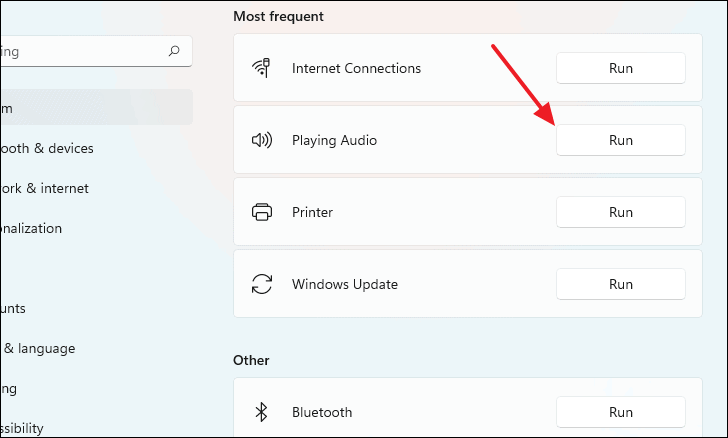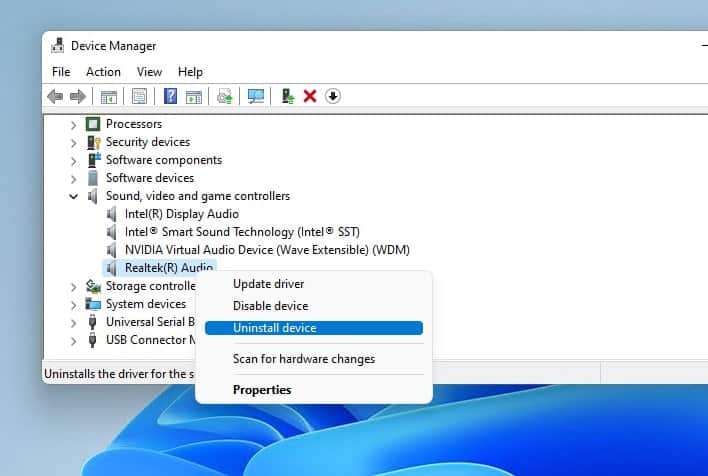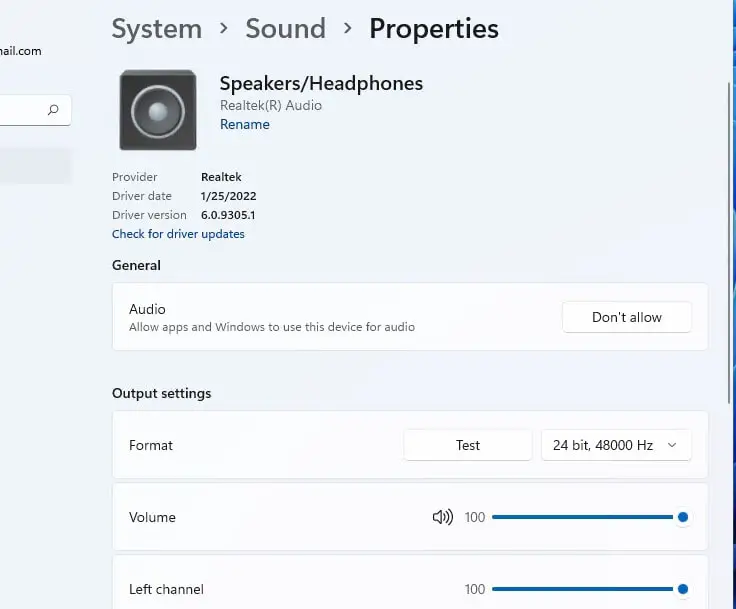Audio sound problems on windows 11 usually occur due to physical issues with the sound card or problems with the audio driver. Again sometimes windows sound problems occur due to a misconfiguration or disabled audio services. If windows 11 sound not working or No sound on your laptop or PC you might need to change some sound options in settings, restart certain audio services and update the audio driver that can feasibly resolve No sound problem in Windows 11. Here in this post, we have listed, a few effective solutions that might help Troubleshooting Audio problems in Windows 11.
Fix No Sound Issue on Windows 11
Before apply any solutions first check and make sure the output device (speaker or headphone) is working without any issues. The audio device is connected to the right port ((often called ‘LINE OUT’) of your PC and check for loose cables as well. In addition Check for a power indicator on the speakers or headphones.
Next check the volume level on your computer, Turn up the volume as high as possible on your speakers or headphones, and also check that Windows 11 doesn’t have the sound muted. In addition, select the sound icon on your PC and ensure that the volume level is set to high.
In addition, if you can’t hear anything in an app like Zoom or Skype, go into the program’s settings to verify the app is set up to use your headset or speakers.
Restart windows audio services
Windows services usually manage long-running processes on your computer, such as network connectivity, sound, Bluetooth etc. And these services run in the background and are initiated when start your computer. If due to system glitch or any other reason the audio service is not started or stuck running that may result No sound problem on windows 11.
Let’s open the windows services console using services.msc and check following services are running state.
- Windows Audio
- Windows Audio Endpoint Builder
- Remote Procedure Call (RPC)
If any of the services is not started then double click on it to open its properties, change the startup type automatic and start the service next to service status.
If the service already running just right-click on it and select restart. Repeat the above steps to restart the Windows Audio Endpoint Builder and Remote Procedure Call (RPC) services.
Run the troubleshooter
Windows has a built in troubleshooter that can find and fix windows 11 audio problems automatically. Let’s run the troubleshooter and see if it’s just the wrong setting.
- Press Windows key + S, type troubleshooting and select Troubleshoot settings.
- Next Select Other troubleshooters then Select Playing Audio
- Click on Run and follow the on-screen instructions to proceed.
- This will automatically detect and fix if there are any problems prevent windows audio from working properly.
- Once done restart your PC and check the problem is resolved or not.
Update Windows 11
Microsoft regularly releases windows updates with security improvements and recent bug fixes. Let’s update windows 11 with the latest fixes and features, may the latest update has a bug fix to address the sound problem.
- Open settings using the Windows key + I and hit check for updates button,
- If new updates are available click on the download and install button, this will download latest update files from Microsoft server and install them on your PC,
- Once done you need to restart your PC to apply them, and check if the audio problem is gone.
Troubleshoot your audio driver
Still unable to fix audio for your system then it might be time to reset your audio driver. Few user reports suggest that the no sound issue is caused by an outdated or incompatible audio driver. You can fix this by reinstalling the latest windows 11 audio driver or by rolling back to a previously known version that used to work in your system.
To Install the latest audio driver
- Press Windows key + X and select device manager, this will display all installed device driver lists,
- locate and expand sound, video and game controllers, right-click on the audio adapter that causing the issue and select uninstall the device.
- When it prompts for confirmation checkmark on remove the driver for this device and click uninstall again.
- Once done we recommend restart your system. This will force Windows to restore to the default OEM driver when you are booting up in case one is present.
In case if the audio driver not install automatically then you can manually reinstall your driver from Device manager and click on scan hardware changes at the top. And your audio adapter should now be automatically recognized and added to your device manager.
OR you can visit the device manufacturer for the latest audio driver for your device, download and install it. Reboot your PC and check the audio status on your Windows 11 PC.
Roll Back the audio driver
Well if the no sound problem started only after the windows update or install the latest sound driver. And the previous audio driver working properly on your device you can obtain the rollback the driver to the previous version following the steps below.
- Open device manager then expand sound, video and game controllers,
- Right-click on the audio adapter that causing the issue and select properties,
- Move to the Driver tab then click on ‘Roll Back Driver’
- Select a reason for why you wish to roll back and click on ‘Yes’. If you’re now prompted to restart your PC, we recommend you do so at the earliest.
- Once restarted, your PC should be using the older driver for your sound adapter.
Configure output device properly
Again check if you have configured the audio settings correctly. Usually, Windows will take care of this automatically, but it’s best you take a look yourself.
Press Windows key + I on your keyboard to open Settings then click Sound,
Under the Output option, make sure to select your desired output device. Then click the device to view its property.
Under Output Settings, you can test different output formats. Make sure the Volume is set to above 50. You can also turn Enhance audio on and off to see if that helps.
Reset sound and volume settings for apps
- Press Windows + I on your keyboard to open the Settings app and click on ‘Sound’ on your right.
- Scroll down and click on ‘Volume mixer’ then click on ‘Reset at the bottom.
This option will reset all the settings for third-party apps and pre-installed programs to their default. If you were facing audio input or output issues with either of these apps, then they should now be fixed on your PC.
Did the above solutions fix windows 11 sound problems? Let us know on the comments below.
Also read:
- No Audio after Windows 11 Update? 7 solutions apply to fix it
- Fix Computer Sound Volume Too Low in Windows 10, 8.1 and 7
- No Audio Output Device Is Installed Windows 10 (5 ways to fix)
- Fix Windows 10 sound problem After Install Windows update
- 5 ways to fix sound not working “audio device is disabled” on windows 10







